Vicki’s and my plan for today was not going to be much fun, but it was necessary. We visited the Heart Mountain Interpretive Center, which was a Japanese American confinement site or concentration camp, depending on who you speak to, during WWII after the bombing of Pearl Harbour. More than 130,000 people of Japanese ancestry, two thirds of whom were American citizens, were uprooted and displaced away from the coasts. The northernmost camp was at Heart Mountain, near Powell, Wyoming.
The centre is privately run and really well laid out, giving a full portrait of the injustices and racism the Japanese Americans faced that culminated in their internment. I had a lot of prior knowledge and Vicki almost none and we both felt that the material was at our level. I alternated between anger and grief as I moved through the exhibits and then went above the centre to do the walking trail and tour the ruins of the hospital complex.
The internees spent three years in the camp, which sounds like so little time, but their lives were destroyed. Even release from the camp did not bring freedom because there was still such a strong anti-Japanese sentiment. The younger folks did better than the elders since they were sheltered from the harsh realities of camp. They were able to be children while the adults fought against boredom and scarcity. There were many suicides before and after release.
Some internees tried to return home after the war, but found there was no home to go back to. With just $25 and a ticket to anywhere in the US, they were released back into a world that did not want them. Wyoming’s governor went on record to say that he did not want the Japanese to stay in Wyoming. The stigma of internship has remained through the generations, with these American citizens passing on to their children that they were somehow inferior to the Caucasians. Most of the adults interred in the camps chose to pretend those three years did not happen.
What the United States did to the Japanese during World War II is not unique. Canada did the same thing, a little known fact that the lady at the centre said she had only just very recently found out. What distresses me is that the current climate in the United States feels very ripe for this sort of thing to happen again. Please, please, please go visit Heart Mountain if you are in the Yellowstone region or the Manzanar National Historic site in California.
- The guard tower and the hospital smoke stack.
- The building is modeled after the tar paper covered barracks.
- “How can you teach democracy in a concentration camp?”
- It is hard to define this type of camp. It is not strictly speaking an internment camp. Despite the connotations of the Nazi death camps, “concentration camp” is probably the most accurate.
- There was no privacy in the camps, even in the toilets.
- One of the stalls in the bathroom was modified to give us an idea of what it’s like to pee next to several strangers.
- Very effective use of mirrors.
- The displaced were not well informed as to what type of clothing they needed. Those from southern California were ill prepared for the harsh Wyoming winters.
- The menus were very spare and not suited to the Japanese palate.
- The camp had a recreation department.
- And two cinemas.
- And a newspaper.
- And schools that started off woefully inadequate, but eventually were on par with others in the state.
- The high school had everything you’d expect in a school of that era, including a gymnasium and classrooms for home economics and woodworking.
- Children played sports and were on teams.
- It took nine white teachers complaining for the food situation to improve. I would like to know more about these heroes.
- It angers me that these young men were drafted and sent to die in a war for a country that had turned its back on them.
- I was surprised that kids could leave the camp to go to college if they found a college that would accept them.
- Don’t count on your Constitution to protect you from something like this happening again. Your country is on the verge of electing a leader who would happily make this sort of nightmare a reality.
- When folks left the camp, they had nothing and found it difficult to start over.
- Many were not welcome back in their hometowns.
- There was a white woman interned at Heart Mountain, the wife of a Japanese man she did not want to abandon.
- I’d like to look up the documentary about Estelle Ishigo.
- Seabrook Farms, a vegetable processing operation, recruited the Japanese after they left the camps, so many went to the plant in New Jersey.
- Empty barracks to the right, furnished barracks to the left.
- These took less than hour to build with green wood, which would shrink and leave up to half-inch gaps in the walls, letting in dust, wind, and cold.
- There was no privacy even with the walls..
- Folks made furniture from scraps of wood, crates, and other bits around the camp.
- The barracks eventually got a modicum of insulation.
- There could be seven or more members of a family in one of these rooms.
- Curtains offered an illusion of privacy.
- Clothesline by the stove.
- Heart Mountain in the distance.
- The smoke stack is the most visible landmark for miles around.
- The Japanese who died in the camp were cremated. When folks were released, they took their loved ones with them. This urn was found some years ago and no living relatives could be found. The centre asked a Buddhist elder if it was okay to display the headstone (with the urn interned under it) and were told yes.
- Benches around the guard tower.
- Above the centre, there is a 1,000 foot walk that gives a summary of what you learn in the centre.
- There was a budget of 45 cents per day to feed the inmates, but only 32 cents was spent. Where did that 13 cents go?!
- There were Boy and Girl Scout troops in the park.
- This was the swimming hole, built after a child drowned in the canal. It sounds like not all the Caucasians involved in the camp were monsters.
- You can just see the edge of the swimming hole.
- This shocked me: internees could vote absentee ballots in their hometown elections!
- The camp was the third largest city in Wyoming at the time!
- Memorial to boys from the camp who died in the war.
- The following pictures are the remains of the hospital complex.
- Not sure what this is!
- There was lots of broken glass all around.
- The smokestack is 18″ off plumb.
- The internees found the landscape alien and bleak. It looks like home to me…
This post was fact checked by Vicki. Thank you!















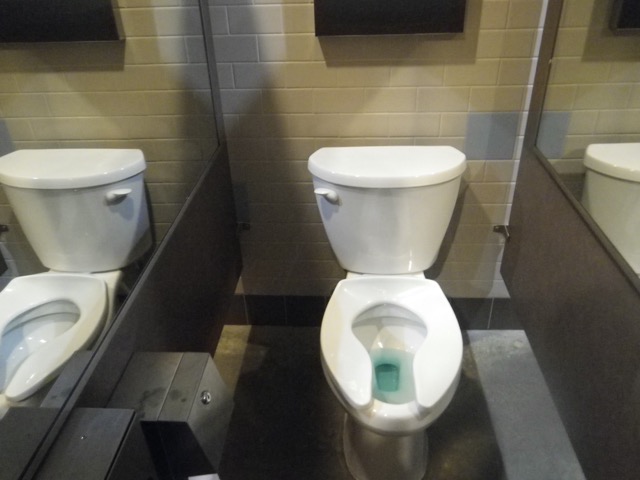






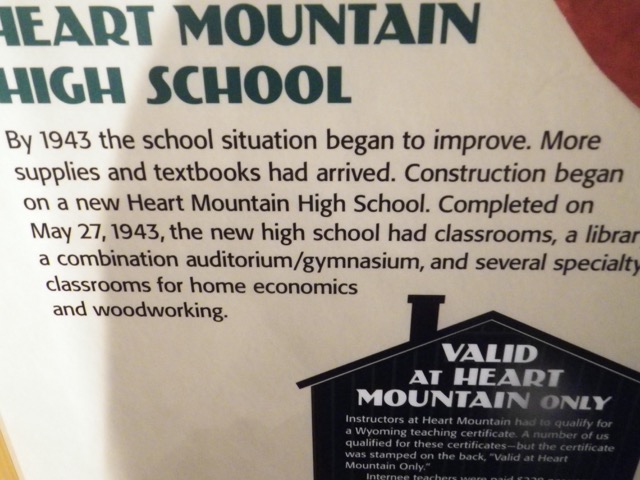









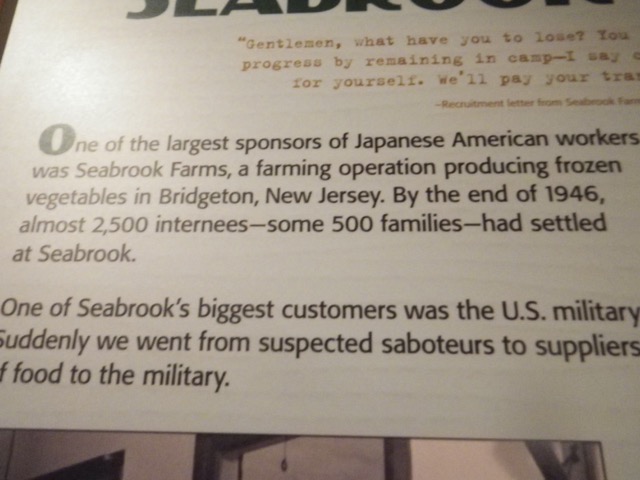











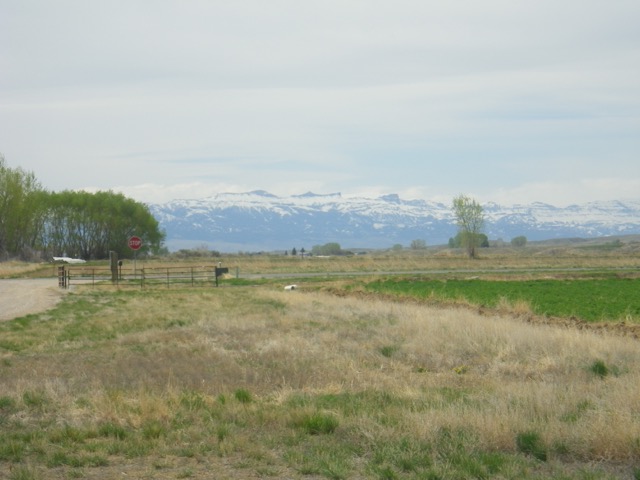










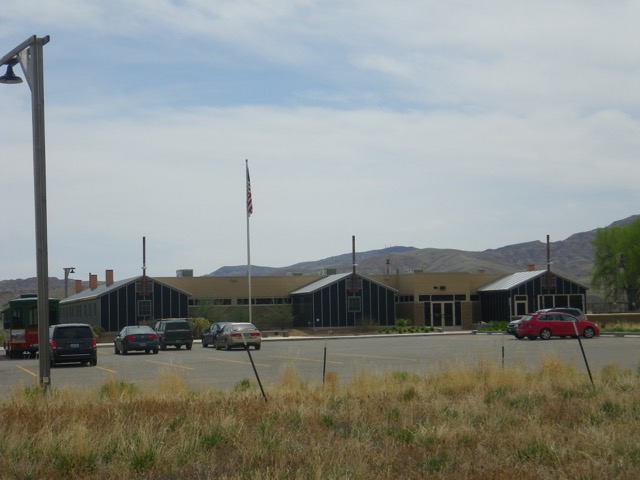


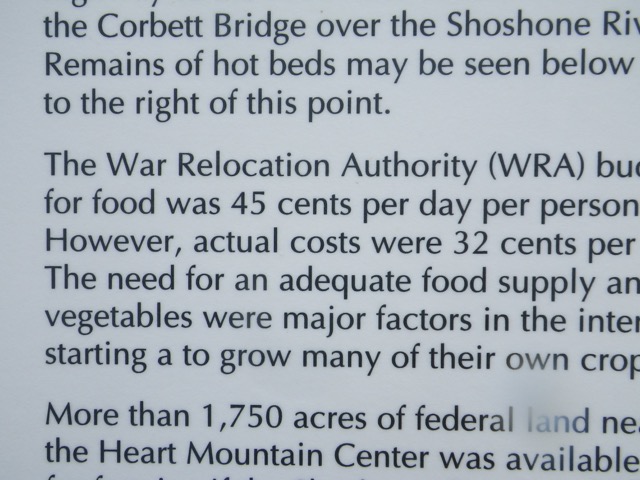






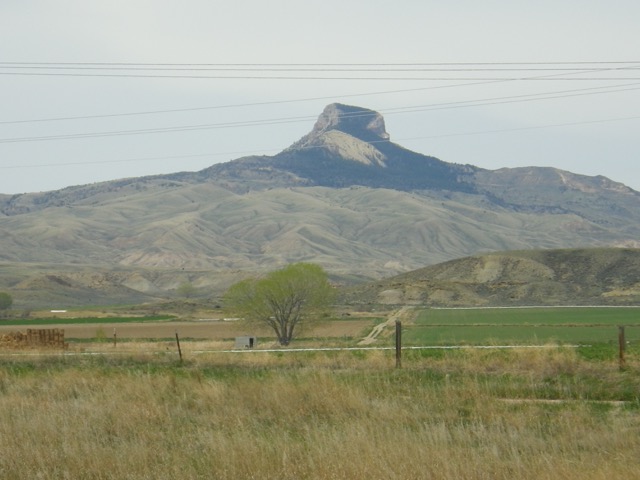







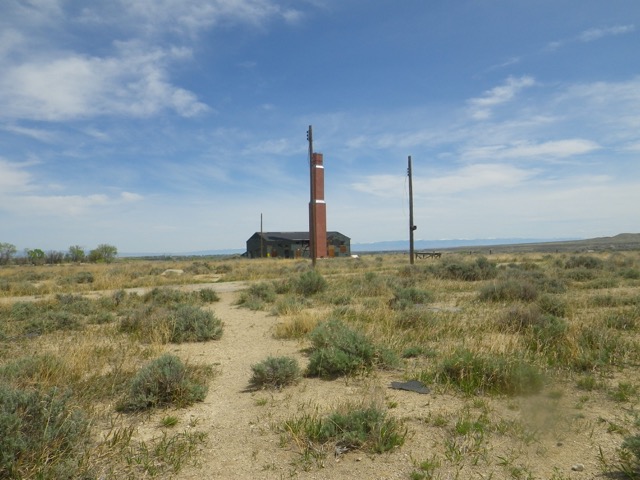





























What a sad but interesting place. Canada indeed had the same camps. A friend of our brother and parents spent time in one after losing their home, property and business, seized by the Canadian Government when the war started.
It is not at all difficult to imagine these same camps filled with Muslims and/or Hispanics if Trump is successful in his bid for the Presidency, a clear indication that we did not learn from our history.
I had the exact same thought as you about this being a likely future if Trump wins. 🙁
I can imagine new internment/re-education camps filled with conservatives and Trump executed if Hillary Clinton wins.
I think there will be camps again the only thing that is undecided is who will be the internees and who will be the guards.
And once again we shake our heads at the growing insanity of America. Now Hillary is going to execute Trump!
This is exactly what I was thinking, but didn’t want to sully my blog with Trump’s name!
Rae, this post was SO interesting…..
Welcome Home to Canada!
Even with the horrible forest fires going on Northern Alberta, very tragic!
Thank you and thank you. 🙂
The Peace River area (Fort St. John) is also on fire. 🙁
This breaks my heart. It really hurts me.
Me too. I was so upset. *HUGS*
When you are in Europe you wll see a lot of merorials dedicated to WWII. Sadly history repeats itself and the nastiness of war continues on a daily basis…
A very interesting post. Many Japanese in Richmond, BC lost everything. In turn as a child, my mother spent four years in a Japanese concentration camp in Indonesia…
I suspect I will find the WWII memorials just as hard. As a history major, I remain boggled by how cyclical history is.
Thank you for sharing that story about your mother. Wow…
My aunt & uncle lived in Japan for seven years in the 1950s & 60s. My aunt told me there were public restrooms alongside the roads, They had separate doors for men and women but there were no interior dividers–it was all one room. She got used to sharing with Japanese men but when a US friend came she could not go in while he was in there.
Many years later there was a woman who would come into the store where I worked bringing musty money that smelled like it had been buried. We guessed her family had hid it before internment.
Thank you for sharing that.